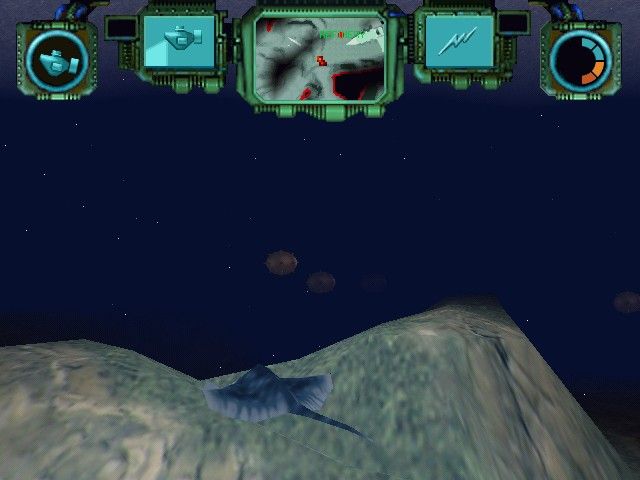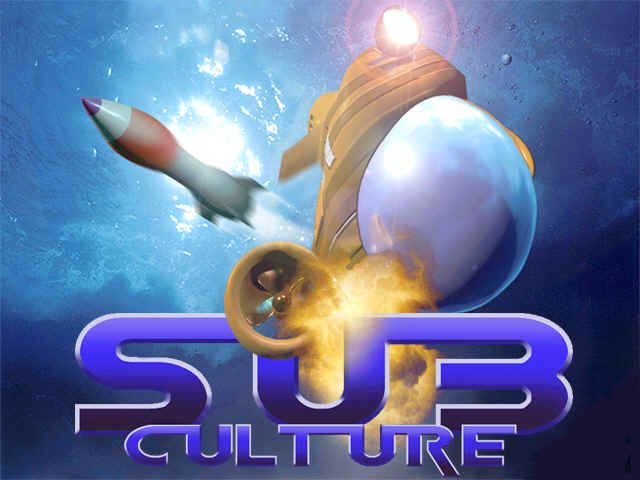Retro Replay Review
Gameplay
Sub Culture offers a unique blend of open-world exploration and mission-based structure, set in a richly detailed underwater environment. As a member of the ultra-tiny race living on the ocean floor, you pilot a customizable submersible craft to navigate sprawling caverns, vast kelp forests, and sunlit reef canyons. The core loop of trade, exploration, and occasional skirmish feels natural, and you’ll quickly find yourself balancing cargo manifests, negotiating prices, and plotting efficient routes between enclaves.
(HEY YOU!! We hope you enjoy! We try not to run ads. So basically, this is a very expensive hobby running this site. Please consider joining us for updates, forums, and more. Network w/ us to make some cash or friends while retro gaming, and you can win some free retro games for posting. Okay, carry on 👍)
Trading is at the heart of Sub Culture’s gameplay. Each settlement has its own supply and demand curves for goods like rare minerals, foodstuffs, and high-tech components. Learning the ebb and flow of prices and stock levels becomes a rewarding puzzle, as smart traders can turn a quick profit and upgrade their subs faster than those who stick to straightforward hauling. There’s enough economic depth that you’ll want to keep notes on which enclaves pay premium rates for certain commodities.
Combat sequences are fast-paced and tactical. When pirate clans or hostile wildlife show up, you must make split-second decisions about evasive maneuvers, weapon selection, and energy allocation between shields and engines. Though it never becomes overly punishing, the risk of losing precious cargo or suffering hull damage keeps each encounter thrilling. You’ll also accept bounty-hunting contracts, adding variety to the regular trade loop and providing a lucrative—if dangerous—alternative income stream.
Beyond trading and combat, a host of side missions and special plots offers narrative depth and gameplay variety. From rescuing stranded scientists to investigating mysterious wrecks, these tasks often reward you with unique upgrades or rare artifacts unavailable through normal commerce. Each subplot encourages you to delve deeper into the ocean’s secrets, making the world feel alive and encouraging repeated playthroughs.
The game strikes a careful balance between structured objectives and the freedom to chart your own course. You’re never railroaded into a single storyline, but there’s always enough guidance to prevent aimless drifting. This design fosters genuine player agency, allowing you to become the master trader, fearless explorer, or cunning pirate lord you envision.
Graphics
Despite its late-90s pedigree, Sub Culture’s graphics still impress with atmospheric lighting and rich color palettes. The sunbeams piercing through the water’s surface cast realistic caustic patterns on the sea floor, and the dynamic day-night cycle adds an immersive sense of time. Particle effects for bubbles, weapon discharges, and damage sparks heighten the sense of subaqueous combat.
The environmental variety is a strong suit. You’ll traverse bioluminescent caverns glowing with alien flora, open trenches teeming with schools of fish, and sprawling coral cities built by the ultra-tiny inhabitants. Each locale has its own visual identity, ensuring that exploration never feels monotonous. Texture resolution holds up surprisingly well, and distinct landmarks make navigation both logical and visually rewarding.
Submersibles and NPC vessels are well-modeled and distinct enough to recognize at a glance. Custom paint jobs and hull modifications further personalize your craft, while enemy ships flaunt unique silhouettes that telegraph their combat roles. Underwater physics animations—such as slight roll and pitch bobbing—lend credibility to the sensation of piloting a craft in a dense fluid medium.
While you may notice a few dated effects—clipping issues or occasional frame dips in crowded scenes—the overall presentation remains charming and functional. A remastered texture pack or smoother frame rate patch could polish the experience, but even in its original form, the game’s aesthetic design remains a highlight.
Complementing the visuals is a subtle but effective UI design. Instrument panels blend seamlessly with the HUD, giving you real-time feedback on speed, hull integrity, and energy reserves without obscuring the environment. Inventory screens and trade menus are intuitive, minimizing downtime between dogfights and docking procedures.
Story
Sub Culture may not thrust you into an epic space opera, but its narrative is perfectly suited to its microscopic premise. You begin as a lowly skipper barely able to afford basic upgrades, gradually building reputation and influence among the five major enclaves. Each faction has distinct ideologies and trade interests, and your alliances—or rivalries—shape both your story and gameplay options.
Major plot threads revolve around political intrigue, clandestine operations, and the discovery of long-lost technologies. Faction leaders will task you with high-stakes missions: smuggling contraband past blockades, uncovering sabotage plots, or retrieving vintage relics from dangerous deep-sea trenches. These missions often branch based on your choices, leading to multiple outcomes and ensuring that no two playthroughs unfold identically.
Character interactions are punctuated by colorful dialogue and memorable personalities. From the grizzled veteran captain who pledges loyalty in return for rare parts, to the slippery merchant baron always chasing the next big deal, the supporting cast feels dynamic. Voice acting, while limited, reinforces the alien yet relatable nature of your aquatic counterparts.
The story effectively ties gameplay mechanics into its lore. Your progression through trading ranks isn’t just a numbers game; it reflects a genuine rise in social standing among the undersea colonies. Combat missions aren’t arbitrary shooter levels but politically charged operations that influence trade routes and alliances.
Although the central narrative arc may feel lightweight compared to modern RPG blockbusters, the depth comes from emergent storytelling—those unexpected betrayals, windfalls, or narrow escapes that you’ll recount long after docking your console. Sub Culture’s understated tale is a fitting backdrop for the sandbox it provides.
Overall Experience
Sub Culture stands out as a hidden gem for players who yearn for exploration, economic strategy, and light combat wrapped in an imaginative setting. The delicate ecosystem of trade networks, faction politics, and underwater hazards creates a living world that lures you back time and again. Every dive into the deep ocean feels purposeful, whether you’re scouting for profit or racing against rival captains.
The learning curve is moderate but fair. Early missions offer enough guidance to get you up to speed on piloting and trading basics, while advanced contracts and deep-sea anomalies provide layered challenges for seasoned captains. This gradual ramp-up ensures newcomers aren’t overwhelmed, while completionists can chase every side quest and hidden artifact.
Technical hiccups—like sporadic frame rate drops or minor clipping—rarely break immersion. Paired with a fitting ambient soundtrack and the occasional stirring orchestral flourish, the game delivers a cohesive sensory experience. Load times are reasonable, and save-anywhere functionality means you can pause a trade run mid-contract without losing progress.
Community enhancements and fan patches have kept Sub Culture relevant, improving compatibility with modern systems and fine-tuning the visuals. Dedicated modders have even added new missions and subs, extending the game’s lifespan well beyond its original scope. Whether you’re playing the vanilla release or a community-enhanced edition, there’s ample content to explore.
For potential buyers, Sub Culture offers an undersea adventure unlike any other—melding economic simulation, free-form exploration, and light action in a charming microcosm of oceanic life. If you’re drawn to games that encourage creative problem solving and reward curiosity, this nostalgic dive into the deep is one you won’t want to miss.
 Retro Replay Retro Replay gaming reviews, news, emulation, geek stuff and more!
Retro Replay Retro Replay gaming reviews, news, emulation, geek stuff and more!









Reviews
There are no reviews yet.